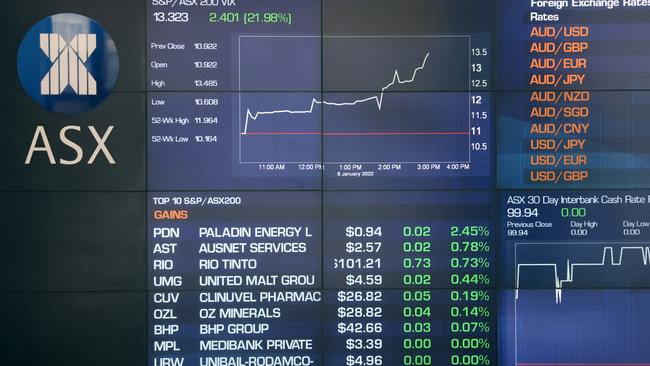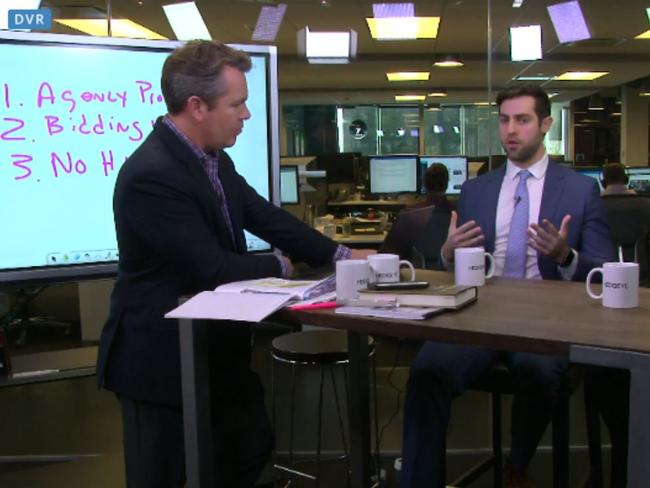Raper Capital founder Jeremy Raper on cutting out middle men to deliver equities research to subscribers
A Sydney Grammar old boy is part of an emerging group of blogger analysts no longer tethered to hedge funds or research outfits.

With just 150 subscribers, Jeremy Raper is perhaps the most successful little-known blogger on earth.
But after years of working for hedge funds and investment bank Goldman Sachs, Raper is finally making good money on his own terms and from an undisclosed resort off the coast of Japan.
“Instead of answering to the boss at 3am asking for a model, you set your own terms,” Raper, who graduated from Sydney Grammar in 2002 and took up a history degree at Harvard, says.
Since May 2020 he has operated Raper Capital, a one-man equities research blog through which he distributes his ideas to subscribers currently paying $US2500.
On New Year’s Eve, he pulled off perhaps his biggest coup when New York investment group 3G Capital bid €175 ($276) a share to acquire building products manufacturer Hunter Douglas in a deal valuing the company at $9.9bn.
Through his blog and in letters to the company’s directors, Raper had campaigned against an earlier deal that would have seen Hunter Douglas’s largest shareholder, Ralph Sonnenberg, buy out the remaining shares for just €62 each.
The deal was a boon for his subscribers – with the final acquisition price an 182 per cent increase on what Sonnenberg had offered.
Raper is part of an emerging ecosystem of equities analysts no longer tethered to hedge funds or research outfits. Instead, they use blogs or Substack (a digital newsletter publishing platform), contribute to the crowd-funded financial strategies community Seeking Alpha and appear on podcasts.
“I think Substacks and the like are here to stay, and that they’re going to be a huge growth industry,” says Andrew Walker, a New York-based blogger and podcaster who, after spending time at JP Morgan and McKinsey, now runs his own fund, Rangeley Capital.
“We’ll see lots of people out of college starting research services to make a name for themselves,” Walker tells The Australian.
“I think we’ll see lots of buysiders starting Substacks as a way to stay engaged in between jobs as well as a way to market themselves for future opportunities.”
In some ways, the new world of Substacks and blogs are an uneasy mix of investment newsletter – a source of stock advice decades old, made notorious by Rene Rivkin’s Rivkin Report – and the aggressive short-selling analysis more recently popularised by outfits like Muddy Waters Research.
Those analysts shot to notoriety in 2011 with a devastating critique of Canadian-listed Chinese plantation operator Sino-Forest Corporation. Following a lengthy criminal investigation, the Ontario Securities Commission said the company and some of its executives had committed fraud.
Since that time, that model has been used by a string of sell-side researchers to varying degrees of success. The leak of a report, prepared for clients by VGI Partners, alleging serious concerns about the ASX-listed Slater & Gordon, resulted in a serious crisis for the company from which it never recovered. J Capital, more recently, has been forced to apologise for publishing research questioning the potential of Vulcan Energy.
For Raper, the public campaign against Hunter Douglas was an exception – he made a deliberate decision to cap the number of subscribers to his blog, and his ideas, to 150. “The value of the content diminishes the more subscribers you have,” he says. “If you have too many subscribers the price will go up or down, and not everyone can invest at reasonable levels.
“I’m not really trying to market my service or grow, but I am trying to grow my Twitter audience because the main reason that the Hunter Douglas situation worked out so well was because I managed to mobilise my audience and my audience had grown to the point where I had 20,000 followers.” Of course, he adds, his subscribers did have a head start on others.
“The main newsletter business is to find undervalued stocks, maybe smaller companies, mid-cap companies where the liquidity is limited,” Raper says. “Hunter Douglas was a bit of an exception because that was an engagement campaign … once my subscribers are fully positioned, I am better off discussing it broadly because it’s a vote of shareholders.”
Over three letters to the company’s independent board directors, Raper warned the deal to sell to the majority shareholder – Sonnenberg owned 93 per cent – was unfair and would be rejected by shareholders, many of which he had recommended acquire the stock and vote no.
“The board is certainly aware at this point that every informed minority investor in the company rejects both the premise and the price of this shambolic deal,” he wrote in one letter sent in May.
“And yet, the board still decided to support this revised offer without consulting … major minority shareholders, let alone the minority group, for substantive discussions,” it continued.
For Raper, it was clear upside.
“I try to find situations where it is very difficult to lose money, or unlikely to lose a lot of money even if you get things wrong because they are so cheap,” he says.
“The Hunter Douglas example, when I first bought shares at €65-€66, there was a €62 bid on the table. So I am essentially risking €3 a share thinking that if they are forced to revise the deal higher I could make €30 or €40 a share.”
His subscribers? The vast majority are high-net-worth individuals, although there are occasional family office operators and some small institutions, Raper says.
“Why would you work for a hedge fund at $200,000 a year and some, maybe, upside, on a great year but risk getting fired in a bad year when – if you are honestly that good – you can build a similar revenue stream as your base salary and earn similar upside through investing over time with a much better lifestyle on the way,” Raper says, adding that he invests his own money in his ideas.

It wasn’t always this lucrative, however. Raper started publishing on Seeking Alpha – a jumble of analysis and stock picking – as he attempted to build a track record to use as a fundraising tool.
“Once you publish something, it’s very hard to remove it from online,” he says. “Your arse is kind of hanging out there once it is up, for better or for worse. At the time I thought if I published 10 ideas a year and got six or seven right, people would see me as a credible analyst over time, and I could use it as a fundraising tool, a marketing tool for raising third party capital.”
It didn’t really take on. But in early 2020, as the Covid-19 pandemic hit, Raper decided locking down the content might at least provide a basic salary to support his young family. He immediately found 60 subscribers at an annual rate of $US1500.
“It’s kind of disintermediating the hedge fund model a bit, but it is obviously contingent on doing good work and I was fortunate that I had already been doing this for many years and built up a base of readers. I felt I had a strong credibility in the online research marketplace,” Raper says.
Andrew Walker, of Rangeley Capital, was at university when he first began writing online under a pseudonym. Now he runs Yet Another Value Blog – and a podcast where he features many of the best-known names in the world of online sell-side research – which he launched a year after his fund.
Some of the content is for subscribers only, but others are freely available. “Look, I get it takes time to turn a tech company around. Twitter had a lot of technical debt, and you don’t just solve that overnight. But they still can’t do even simple things right,” Walker writes in a recent post. “It’s been a rough month for Peloton; the company got slaughtered on their earnings and then raised a bunch of capital at unfortunate prices … but I’m still bullish on the company long term,” he writes in another.
He has about 10,000 subscribers to the free newsletter and several hundred premium users.
“It’s a mix of individual investors (generally high net worth), institutional investors (ranging from tiny hedge funds to multibillion-dollar behemoths), and retired institutional investors (i.e. someone who used to run a large fund, but now just manages their own money/family office),” Walker tells The Australian by email.
“Some readers/subscribers I talk to almost every week; others maybe once a year or not at all.”

In some ways, it is the professionalisation of the blogs that have floated around online for several years. For three years, until they signed off in 2018, the anonymous Australian equities research publishing on Find The Moat was well read by local fund managers.
“Some of you would have figured out that I sit ‘off the grid’ from the investment community at large. This is true,” the blogger wrote when signing off in 2018, explaining he had since been hired by an equities fund manager.
Then there were others who were not anonymous. Forager Funds – now with more than $408m under management – put its name to an aggressive 2015 blog post accusing Anchorage Capital of “the greatest private equity heist of all time” when the private equity group publicly listed Dick Smith Electronics. The company, one of the best-known consumer retail brands, collapsed shortly after the post was published. The name is now owned by Kogan.com.
But they were few and far between – at least compared to the large volume of premium subscription equities research services now available online.
Like Walker, Raper – through Raper Capital – also runs his own money. As for the ideas, they come from a variety of sources, he says.
“I turn over a lot of rocks. I’ve been doing this for a lot of years and I know a lot of people and what to look for,” Raper says.
“I throw out a lot of things very quickly. In terms of Hunter Douglas specifically, it was written up on another site but I understood the potential of the idea and the set-up and that there was an engagement that was waiting to happen, and I decided to take that up.
“The real skill is knowing when to throw money at what idea.
“I started my career at Goldman Sachs in Tokyo. Right now I could give you a list of 50 to 100 stocks trading in Japan at 70 per cent below fair value.
“It’s not about finding something cheap, you also have to work out how it is going to become less cheap and how you are going to get it from crazy, crazy cheap to just a little cheap.”

To join the conversation, please log in. Don't have an account? Register
Join the conversation, you are commenting as Logout